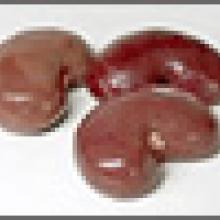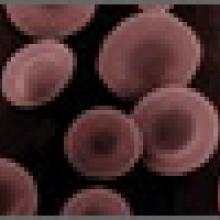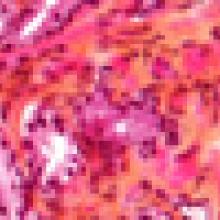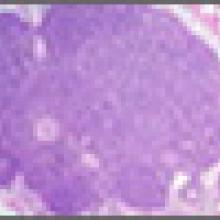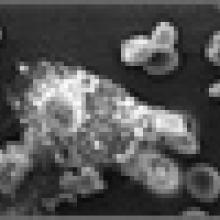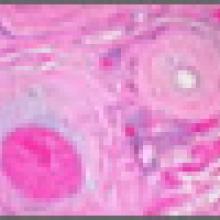Newsroom
A study published in the Journal of Urology examined the relationship between the presence of arsenic in urine and kidney cancer (renal cell carcinoma), the most common form of cancer of the kidneys. Their conclusion was that the level of arsenic present in urine is strongly related to the… more
German and U.S. researchers have shown that a single gene, BRAF, can cause a form fo brain cancer if it is not properly controlled. BRAF is part of a cell signaling pathway and is known to be involved in the development of pilocytic astrocytoma, a growth that most often affects children. In… more
Nanoparticles, extremely small man-made structures, hold great promise as cancer treatment delivery systems. The tiny hollow particles can carry drugs directly to cancer cells. A stumbling block for their use has been the rapid elimination of the particles from the circulation. … more
It is well established that cancer is a genetic disease. It is the result of an accumulation of changes (mutations) in genes that control cell division. The actual order in which the mutations occur is not clear. Research from the University of California was able to determine the order… more
CancerQuest.org has created an interactive 'Cervical Cancer Awareness Town' that lets users watch as 'citizens' discuss issues about human papillomavirus (HPV) and cervical cancer. The material is available in English and Spanish.
The Food and Drug Administration (FDA) revealed nine warning images that are set to appear on cigarette packs, cartons, and ads in September of 2012. These warnings take up half of the front display of cigarette packs, and are very graphic. In addition, a hotline for smoking cessation is also… more
A study of 5366 men diagnosed with prostate cancer between 1986 and 2006 demonstrated that men who smoke are more likely to die from their disease (or cardiovascular disease) than non-smokers or patients who had quit smoking for at least 10 yrs. prior to their diagnosis.
A study of over 127,000 colon cancer patients has determined that married patients were less likely to die from their disease. Married patients were 14% less likely to die than unmarried patients. Although the reason for the difference is not known, the authors believe that the care… more
Withaferin, a chemical purified from extracts of a plant (Withania somnifera) used in traditional East Indian medicine, was shown to prevent cell migration in the laboratory (in vitro) and metastasis in animal models of breast cancer. The chemical binds to vimentin, a protein that helps… more
In the American Cancer Society’s recent releases, “Cancer Statistics, 2011” and “Cancer Facts and Figures 2011”, estimates indicate that the rate of death from cancers have steadily decreased between 1990 and 2007. There was a 22% reduction in deaths for men and 14% for women. This totals… more
National Cancer Institute researchers, in collaboration with researchers from other groups, have discovered that a drug called niclosamide,used to treat tapeworm infections, can prevent metastasis of colon cancer. The researchers screened a large number of chemicals for their ability to inhibit the… more
Scientists at the Max Delbrück Center for Molecular Medicine have discovered that lymphoma cancer cells work to create a more favorable environment for themselves when they disperse. Like all cells, cancer cells need a constant supply of nutrients. The reseach revealed that lymphoma cells can… more
Scientists at the University of Rochester recently identified a protein that helps to repair DNA damage caused by reactive oxygen species (ROS). ROS are chemicals that can be formed by exposure to radiation but may also occur as a normal byproduct of cellular activities. … more
Researchers at Cedar-Sinai Medical Center have developed an experimental immunotherapy that may prolong the life of patients with gliomas, a common form of brain cancer. The researchers worked with newly diagnosed gliobastoma multiforme patients. Blood cells were taken from the patients,… more
A radionuclide called Terbium-161 may soon be used as a new form of treatment for small tumors and metastases. Radionuclide treatment typically involves injecting radioactive elements, or nuclides, into a patient, which are then transported throughout the body to cancer cells. The elements… more
A recent release by the University of Chicago Medical Center suggests that many patients with cancers in late stages receive chemotherapy and treatments that are ineffective when they should be seeking other solutions. These patients often end up facing high risks and costs when instead, they… more
The Van Andel Institute and researchers from the United States, China, and Singapore have discovered an important protein that may play a significant part in the development of nasopharyngeal carcinoma (NPC). NPC is the most common cancer of the head and neck and also has the highest rates of… more
Many new cancer treatments are designed to block the development of new blood vessels that feed tumors. One of the most common targets is the vascular endothelial derived growth factor (VEGF). New research has shed light on the mechanism by which anti-VEGF treatments cause the death of… more
In a study published in Cancer Research, putting mice on a low carbohydrate/ high protein diet lowered the risk of cancer and slowed the growth of implanted tumors. In one experiment, several different strains of mice were implanted with either human or mouse tumors and fed on one of two diets (… more
New research presented in the American Journal of Epidemiology demonstrates that at least one form of brain cancer, glioma, does not tend to develop in the areas that would be predicted to be most affected by radiation coming from cell phones. The Finnish study examined 888 cases of glioma… more

